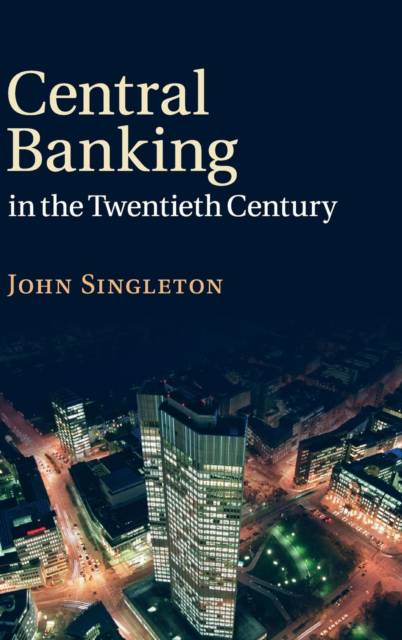
- Afhalen na 1 uur in een winkel met voorraad
- Gratis thuislevering in België vanaf € 30
- Ruim aanbod met 7 miljoen producten
- Afhalen na 1 uur in een winkel met voorraad
- Gratis thuislevering in België vanaf € 30
- Ruim aanbod met 7 miljoen producten
Zoeken
Omschrijving
Central banks are powerful but poorly understood organisations. In 1900 the Bank of Japan was the only central bank to exist outside Europe but over the past century central banking has proliferated. John Singleton here explains how central banks and the profession of central banking have evolved and spread across the globe during this period. He shows that the central banking world has experienced two revolutions in thinking and practice, the first after the depression of the early 1930s, and the second in response to the high inflation of the 1970s and 1980s. In addition, the central banking profession has changed radically. In 1900 the professional central banker was a specialised type of banker, whereas today he or she must also be a sophisticated economist and a public official. Understanding these changes is essential to explaining the role of central banks during the recent global financial crisis.
Specificaties
Betrokkenen
- Auteur(s):
- Uitgeverij:
Inhoud
- Aantal bladzijden:
- 350
- Taal:
- Engels
Eigenschappen
- Productcode (EAN):
- 9780521899093
- Verschijningsdatum:
- 27/12/2010
- Uitvoering:
- Hardcover
- Formaat:
- Ongenaaid / garenloos gebonden
- Afmetingen:
- 160 mm x 231 mm
- Gewicht:
- 675 g

Alleen bij Standaard Boekhandel
+ 289 punten op je klantenkaart van Standaard Boekhandel
Beoordelingen
We publiceren alleen reviews die voldoen aan de voorwaarden voor reviews. Bekijk onze voorwaarden voor reviews.











